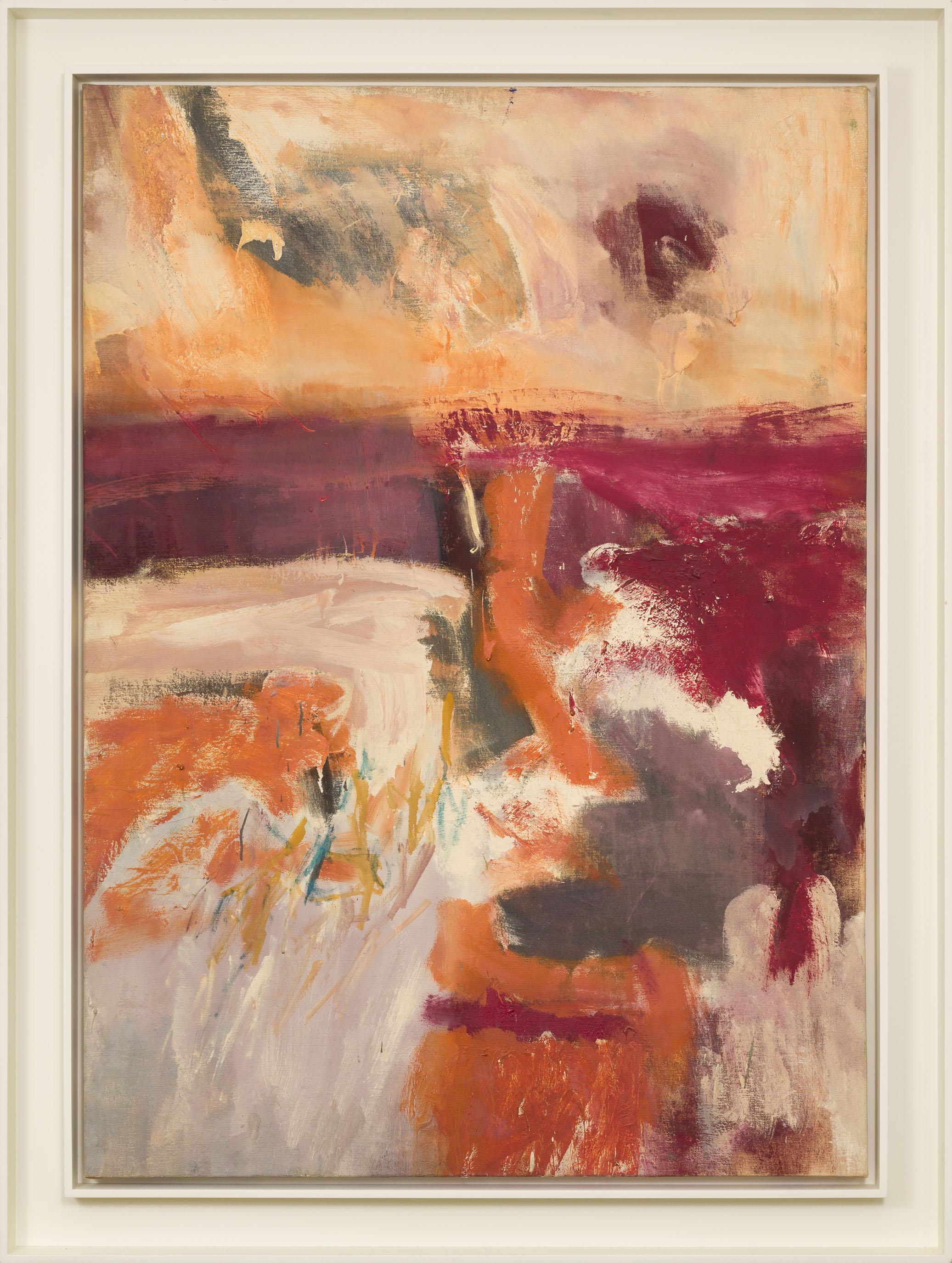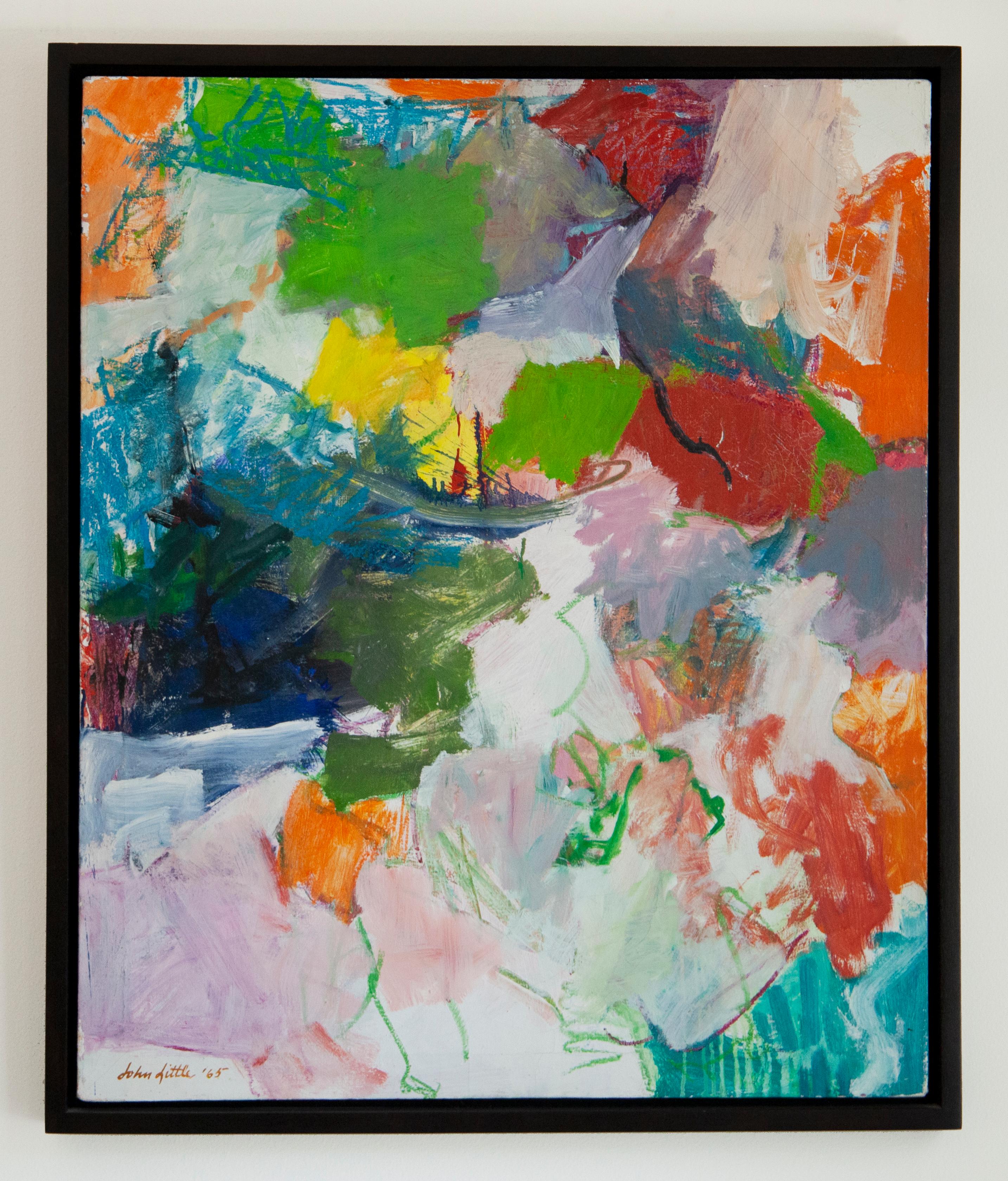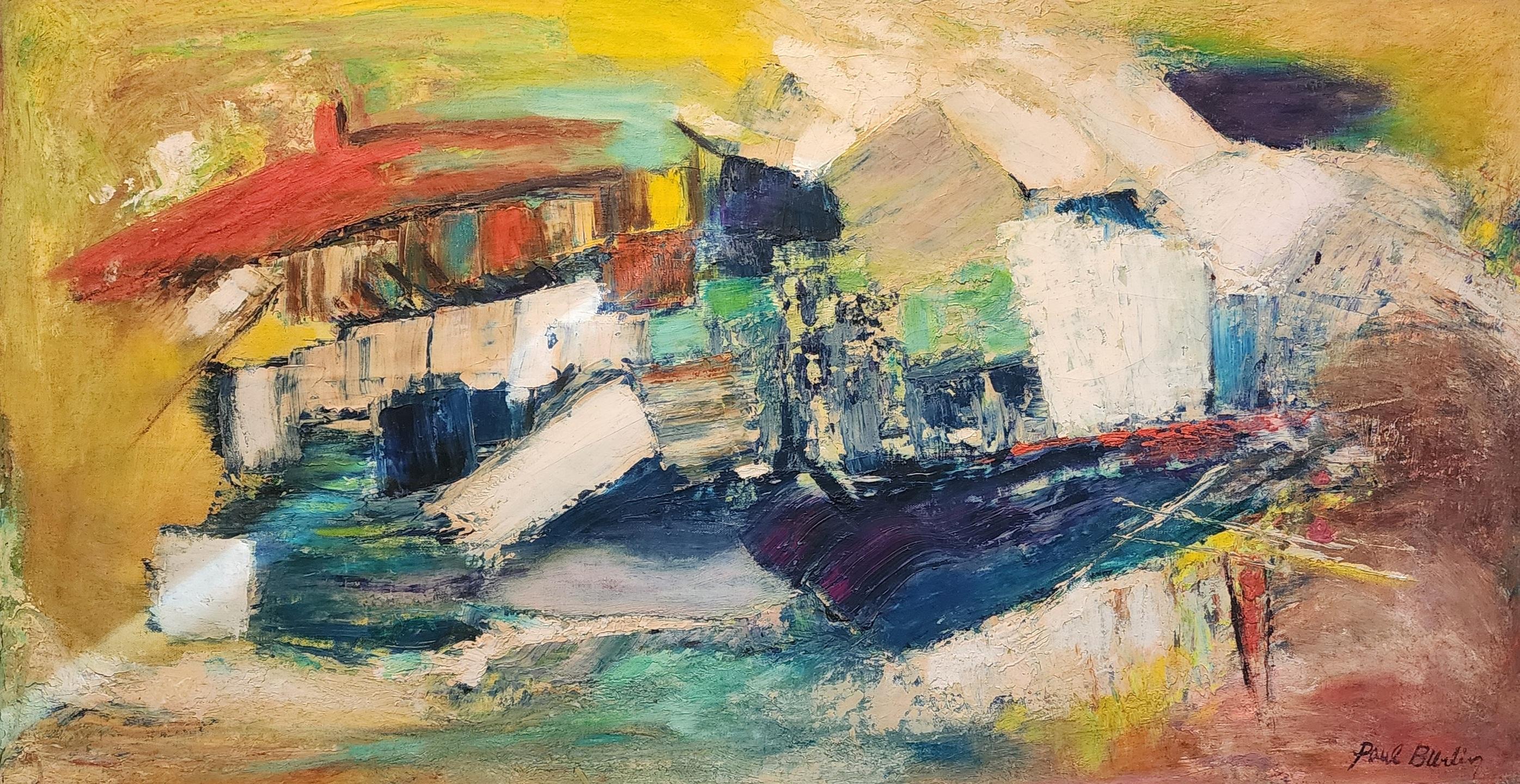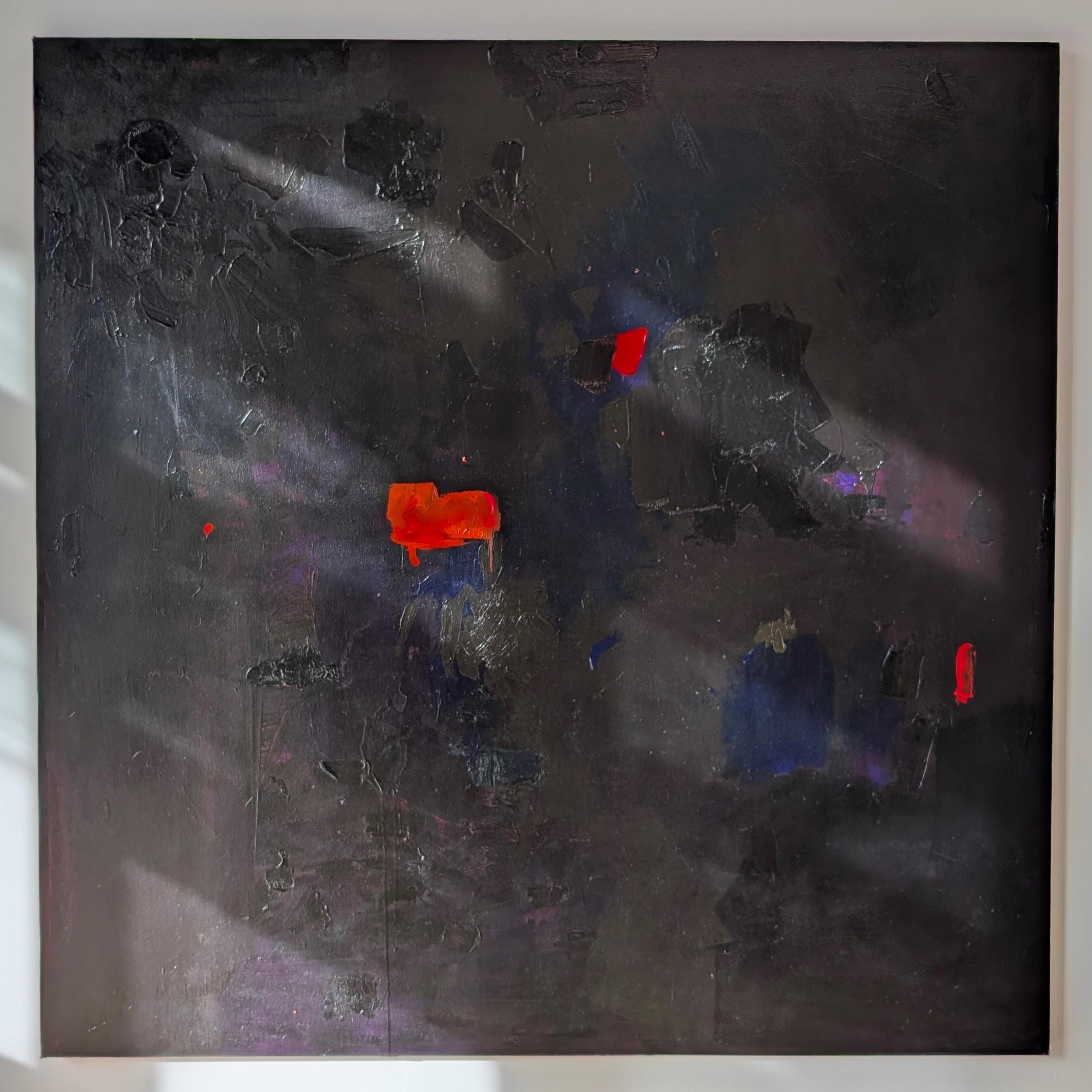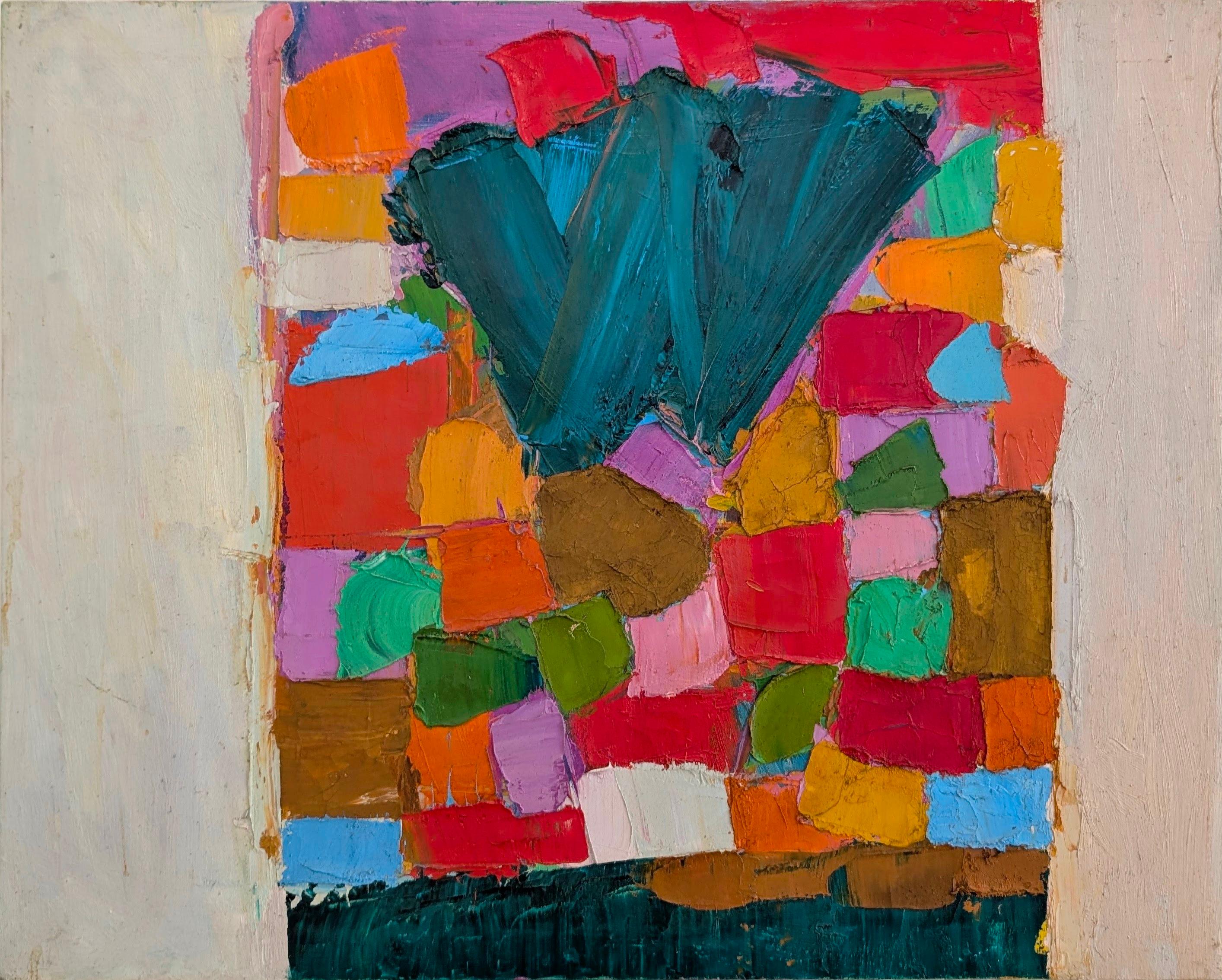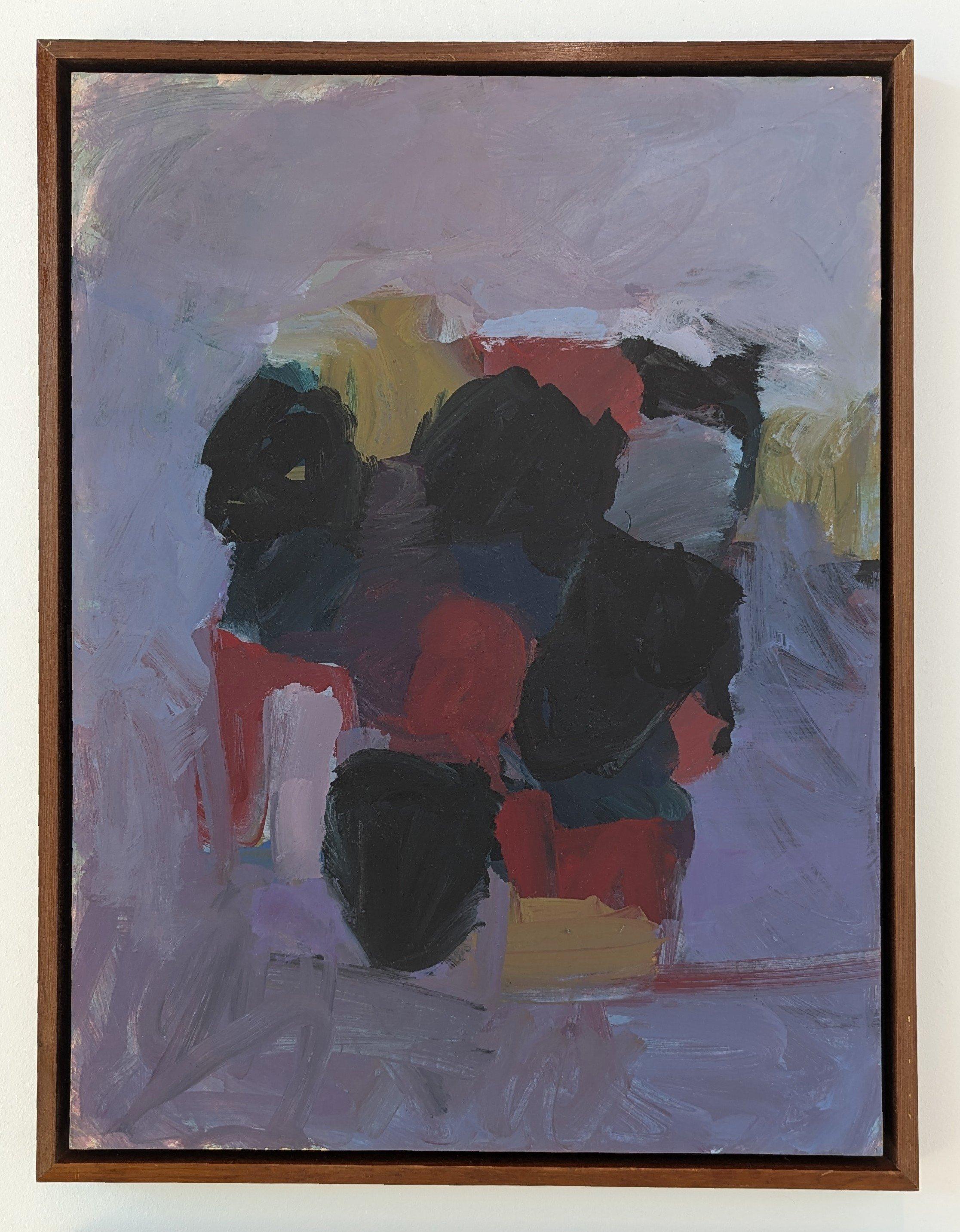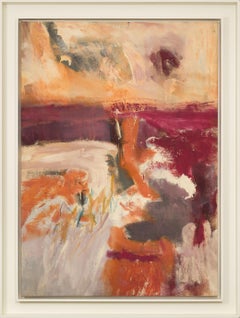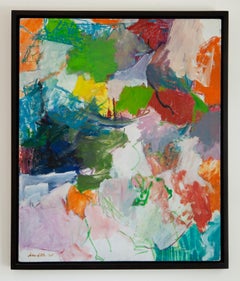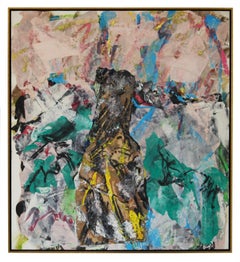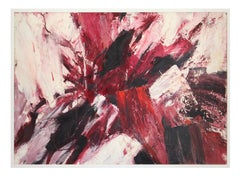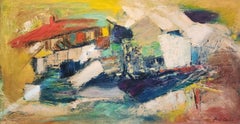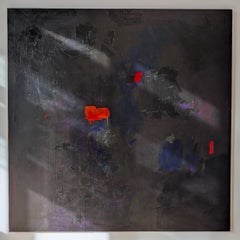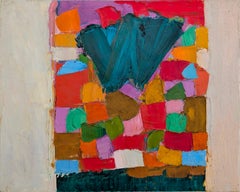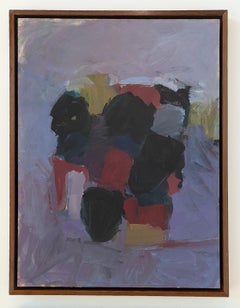Want more images or videos?
Request additional images or videos from the seller
1 of 7
Dennis BurtonEdge1958
1958
$16,000
£11,949.49
€13,865.60
CA$22,160.11
A$24,841.31
CHF 12,954.18
MX$304,493.81
NOK 164,151.21
SEK 156,063.72
DKK 103,455.35
Shipping
Retrieving quote...The 1stDibs Promise:
Authenticity Guarantee,
Money-Back Guarantee,
24-Hour Cancellation
About the Item
Waterline Fine Art, Austin, TX is pleased to present the following work:
Oil on board. Signed and dated lower right and verso, titled verso.
36.25 x 48 in.
40.5 x 52.25 in. (framed)
Framed in contemporary silver, tiered floater frame.
Dennis Eugene Norman Burton was a Canadian modernist who was born in Lethbridge, Ontario. He attended the Ontario College of Art from 1952 to 1956, and worked for the Canadian Broadcasting Corporation (CBC) as a graphic designer until 1960.
Inspired by a 1955 exhibition of the “Painters Eleven” at Toronto’s Hart House, as well as American Abstract Expressionist artists such as Robert Motherwell, Jack Tworkov, and Willem de Kooning, Burton shifted his focus toward abstraction in the mid-1950s.
Burton showed with the famed Isaacs Gallery in Toronto, becoming one of the youngest members on the gallery’s roster. A talented musician, he also played saxophone in the Artist’s Jazz Band in Toronto - a pioneering Canadian free-jazz group formed in 1962 by Toronto visual artists associated with the Abstract Expressionist movement and loosely affiliated with the Isaacs Gallery.
Burton was the co-founder of Toronto’s New School of Art in 1965, assuming the role of director from 1971 to 1977. A career educator, he also taught at the Ontario College of Art and Design, Banff School of Fine Arts, University of Lethbridge, Art’s Sake - Toronto, and Emily Carr University.
An important figure in post-war Canadian abstraction, Burton’s work is in the collections of the Art Gallery of Ontario, the Glenbow Museum, the Montreal Museum of Fine Arts, the National Gallery of Canada, the Vancouver Art Gallery, as well as venerable American institutions such as the Hirshhorn Museum and Sculpture Garden, the Los Angeles County Museum, and the Smithsonian Institute.
- Creator:Dennis Burton (1933 - 2003)
- Creation Year:1958
- Dimensions:Height: 36.25 in (92.08 cm)Width: 48 in (121.92 cm)
- Medium:
- Movement & Style:
- Period:
- Condition:Overall very good and stable condition. Inquire for additional details.
- Gallery Location:Austin, TX
- Reference Number:1stDibs: LU2287211541542
About the Seller
5.0
Vetted Professional Seller
Every seller passes strict standards for authenticity and reliability
Established in 2020
1stDibs seller since 2023
6 sales on 1stDibs
- ShippingRetrieving quote...Shipping from: Austin, TX
- Return Policy
Authenticity Guarantee
In the unlikely event there’s an issue with an item’s authenticity, contact us within 1 year for a full refund. DetailsMoney-Back Guarantee
If your item is not as described, is damaged in transit, or does not arrive, contact us within 7 days for a full refund. Details24-Hour Cancellation
You have a 24-hour grace period in which to reconsider your purchase, with no questions asked.Vetted Professional Sellers
Our world-class sellers must adhere to strict standards for service and quality, maintaining the integrity of our listings.Price-Match Guarantee
If you find that a seller listed the same item for a lower price elsewhere, we’ll match it.Trusted Global Delivery
Our best-in-class carrier network provides specialized shipping options worldwide, including custom delivery.More From This Seller
View AllUntitled
Located in Austin, TX
Waterline Fine Art, Austin, TX is pleased to present the following work:
Oil on canvas. Signed verso. Some scratched out, illegible writing in paint and graphite verso, which may ha...
Category
1960s Abstract Expressionist Abstract Paintings
Materials
Canvas, Oil
Untitled
By John Little
Located in Austin, TX
Waterline Fine Art, Austin, TX is pleased to present the following work:
Oil on canvas. Signed and dated lower left.
36.25 x 30.25 in.
38.5 x 32.5 in. (framed)
Custom hardwood frame with dark stain. FredEric’s Frame Studio, Chicago.
Provenance
McCormick Gallery, Chicago
Born in Alabama, John Little attended the Buffalo (NY) Fine Arts Academy as a teenager, until 1927. Soon after, he moved to New York where he began operatic vocal training and opened what would become a very successful textile business designing fabric and wallpaper.
In 1933, he enrolled at the Art Students League under the tutelage of George Grosz. Little’s early work consisted predominantly of landscapes, until 1937, when he began studying under Hans Hofmann and his work naturally shifted toward abstraction. During his time with Hofmann, he with artists such as Lee Krasner, George McNeil, Gerome Kamrowski, Giorgio Cavallon...
Category
1960s Abstract Expressionist Abstract Paintings
Materials
Canvas, Oil
$25,000
Untitled
By Michael Goldberg
Located in Austin, TX
Waterline Fine Art, Austin, TX is pleased to present the following work:
Oil, pastel, and paper collage on canvas. Signed and dated verso.
52.75 x 47.75 in.
54 x 49 in. (framed)
Gilded floater frame.
Provenance
Compass Rose, Chicago
Born Sylvan Irwin Goldberg in 1924 and raised in the Bronx, Michael Goldberg was an important figure in American Abstract Expressionism, who began taking art classes at the Art Students League in 1938. A gifted student, Goldberg finished high school at the age of 14 and enrolled in City College. He soon found New York’s jazz scene to be a more compelling environment, and he began skipping classes in favor of the Harlem jazz clubs near campus. Goldberg’s love of jazz would become a lifelong passion and a key component to his approach to composition in his paintings.
From 1940 to 1942, like many of the leading artists of the New York School, Goldberg studied with Hans Hofmann. In 1943, he put his pursuit of painting on hold and enlisted in the U.S. Army. Serving in North Africa, Burma, and India, Goldberg received a Purple Heart and a Bronze Star before being discharged in 1946. After his service, he traveled and worked in Venezuela before returning to the United States, settling back in New York and resuming studies with Hofmann and at the Art Students League.
Living downtown and frequenting the Cedar Bar, Goldberg befriended many of the artists of the New York School. In 1951, his work was included in the groundbreaking Ninth Street Show, co-organized by Leo Castelli, Conrad Marca-Relli, and the Eighth Street Club, and featuring the work of - among others - Hofmann, Jackson Pollock, Willem de Kooning, and Franz Kline. In 1953, the Tibor de Nagy...
Category
1980s Abstract Expressionist Abstract Paintings
Materials
Canvas, Pastel, Mixed Media, Oil, Handmade Paper
July Fourth
Located in Austin, TX
Waterline Fine Art, Austin, TX is pleased to present the following work:
Oil on canvas. Signed and titled verso.
40.25 x 56.25 in.
40.75 x 56.75 in. (framed)
Custom framed in a wh...
Category
1960s Abstract Expressionist Abstract Paintings
Materials
Canvas, Oil
Bolmes
Located in Austin, TX
Waterline Fine Art, Austin, TX is pleased to present the following work:
Oil on canvas. Signed, dated, and titled verso.
46.5 x 36 in.
47.5 x 37 in. (framed)
Custom framed in a maple floater.
Charles Strong, who was born in Greeley, Colorado on Christmas Day in 1938, was one of the youngest artists of the San Francisco School of Abstract Expressionism. He was a colleague of vanguard artists such as Elmer Bischoff, Richard Diebenkorn, Jack Jefferson...
Category
1960s Post-War Abstract Paintings
Materials
Canvas, Oil
$12,000
Untitled
By John Opper
Located in Austin, TX
Waterline Fine Art, Austin, TX is pleased to present the following work:
Oil on canvas. Signed lower right, signed and dated verso.
62.25 x 56.25 in.
64 x 58 in. (framed)
Custom framed in a natural cherry wood floater.
Provenance
Washburn Gallery, New York
Behnke Doherty Gallery, Washington Depot, CT
Born in 1908 in Chicago, John Opper moved with his family to Cleveland, Ohio, in 1916. In high school, he began studying art and attending classes at the Cleveland Museum of Art.
After graduation, he enrolled in the Cleveland School of Art (now Cleveland Institute of Art), only to withdraw after a year and move to Chicago, where he took classes at the Art Institute of Chicago. He eventually returned to Cleveland, enrolling at Western Reserve University (now Case Western Reserve), receiving his bachelor’s degree in 1931. The Depression has taken hold during this period, so Opper found work by teaching metalworking and sketching classes at the Karamu Settlement House, the oldest African American theater in the United States.
In 1933, Opper traveled to Gloucester, Massachusetts, eventually connecting with the artist Hans Hofmann, who was teaching at the school run by Ernest Thurn. Hofmann encouraged Opper to work “in a more modern vein and start finding what it’s all about.” Heeding this advice, Opper relocated to New York, co-founding a mail-order club of American and British prints for dissemination to schools and museums.
By the mid-1930s, he joined the Works Progress Administration (WPA) Easel Division, and also began attending the 57th Street school that Hans Hofmann had established after leaving the Art Students League. Looking back at his time at the school, Opper felt that beyond Hofmann’s teaching, most advantageous was his contact with fellow artists, including Byron Browne, Rosalind Bengelsdorf, and George McNeil. At the time, he also met Giorgio Cavallon and the sculptor Wilfrid Zogbaum.
In 1936, Opper became a founding member of the American Abstract Artists, along with Balcomb and Gertrude Greene. The organization was formed to provide an opportunity for artists to show abstract works at a time when such opportunities were scarce. This led to his first solo show in 1937 at the Artists’ Gallery in New York.
During his summer in Gloucester in 1933, Opper came to know Milton Avery. Painting in Avery’s informal studio in New York City the following winter, he became acquainted with Adolph Gottlieb and Mark Rothko. Opper participated in a couple of shows during the 1930s of the American Artists Congress Against War and Fascism, whose president was Stuart Davis. About the same period, Opper joined the Artists’ Union and served as the business manager of its publication, Art Front.
During World War II, Opper worked for a ship design company creating drawings for piping systems used in PT boats...
Category
1950s Abstract Expressionist Abstract Paintings
Materials
Canvas, Oil
$25,000
You May Also Like
Abstract
By Paul Burlin
Located in Saratoga Springs, NY
Signed lower right.
Paul Burlin's abstract works are celebrated for their dynamic use of color and form, often exploring themes of spatial infinity and emotional expression. You will see in this painting a showcase of harmonious blend of angular forms and pure colors, creating a sense of openness and serenity
Born in New York City, Paul Berlin...
Category
1960s Abstract Expressionist Paintings
Materials
Oil
$20,000
Untitled
Located in Vancouver, CA
Ron Stonier (1933-2001) was a dedicated Vancouver artist celebrated for his exploration of abstract painting, influenced by his mentors Gordon Smith and Jack Shadbolt, as well as by ...
Category
1670s Abstract Abstract Paintings
Materials
Canvas, Acrylic
$17,500
Untitled
Located in Vancouver, CA
Ron Stonier (1933-2001) was a dedicated Vancouver artist who was celebrated for his exploration of abstract painting. He was influenced by his mentors Gordon Smith and Jack Shadbolt ...
Category
1960s Abstract Abstract Paintings
Materials
Canvas, Oil
Untitled
Located in Vancouver, CA
Ron Stonier (1933-2001) was a dedicated Vancouver artist celebrated for his exploration of abstract painting, influenced by his mentors Gordon Smith and Jack Shadbolt, as well as by ...
Category
1960s Abstract Abstract Paintings
Materials
Paper, Oil, Board
untitled
By Dennis Ashbaugh
Located in Fairlawn, OH
Untitled
Mixed media on paper, 1979
Signed and dated ‘79 lower right (see photo)
Sheet size: 31 1/2 x 48"
Frame: 34 1/4 x 50 1/4"
Provenance:
Members Gallery, Albright-Knox Art Galle...
Category
1970s Abstract Abstract Paintings
Materials
Mixed Media, Oil
Untitled
Located in Vancouver, CA
Ron Stonier (1933-2001) was a dedicated Vancouver artist celebrated for his exploration of abstract painting, influenced by his mentors Gordon Smith and Jack Shadbolt, as well as by ...
Category
1960s Abstract Geometric Abstract Paintings
Materials
Paper, Oil, Board
More Ways To Browse
Burton Artist
Jack Roberts Abstract Painting
Vintage Saxophones
Silver Sake
Burton Oil Painting
Cambridge University
Japanese Oil Painting Signed
Portugal Paintings
Baltimore Paintings
Abstract Sea Life
Graffiti Art Love
Palm Springs Homes
Bay Area California Artist
Modern Abstract Faces
Abstract Cityscape
Argentina Paintings
Colorful Spanish Art
Wood Plane
